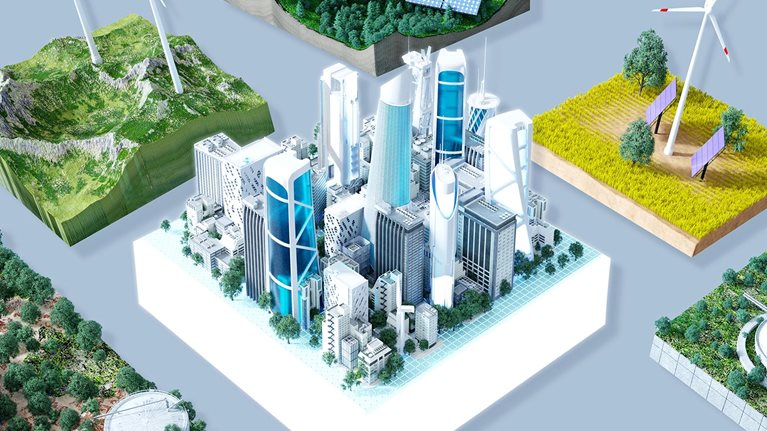
COP is an annual meeting where member states of the United Nations convene to assess progress in dealing with climate change and make a plan for climate action within the guidelines of the UNFCCC. (The formal name for the meetings is the Conference of the Parties of the UN Framework Convention on Climate Change, or the United Nations Climate Change Conference.) The first COP was held in Berlin in 1995. Last year’s COP29 was held in Baku, Azerbaijan.
Get to know and directly engage with senior McKinsey experts on COP
Anna Granskog is a partner in McKinsey’s Helsinki office, Hemant Ahlawat is a senior partner in the Zurich office, Mark Patel is a senior partner in the Bay Area office, Reinaldo Fiorini is a senior partner in the São Paulo office, Sanjay Kalavar is a senior partner in the Houston office, and Vishal Agarwal is a senior partner in the Singapore office.
COP decisions indicate a level of global consensus. That’s because in the UN system, large and powerful countries, such as China and the United Kingdom, have the same voting rights as tiny island nations, such as Vanuatu or São Tomé and Príncipe. Plus, decisions are made only by consensus. UN member states send representatives to participate in the negotiations. Observer organizations also send delegates, and industry representatives and lobbyists attend as well.
But before we dive any further into COP—including its triumphs and challenges and what to expect from this year’s conference—let’s provide some background.
Learn more about McKinsey’s presence at COP.
What are greenhouse gases?
Greenhouse gases are naturally occurring gases, such as CO2, methane, and sulfur dioxide, that trap heat on Earth, like a greenhouse traps heat to grow tomatoes in cold climates. According to NASA, without greenhouse gases, the average temperature on Earth would be 0°F (–18°C), rather than the much balmier 59°F (15°C) it is now.

Looking for direct answers to other complex questions?
Around the mid-1700s, with the beginning of the Industrial Revolution, humans started burning fossil fuels to support increasingly mechanized lifestyles. Burning fossil fuels releases greenhouse gases into the atmosphere. And they’re not going anywhere anytime soon: CO2, which is the cause for about three-quarters of global warming, can take thousands of years to be fully absorbed. More greenhouse gases in the atmosphere means a warmer planet.
What is a 1.5°C pathway?
Since the Industrial Revolution, the average global surface temperature has risen by about 1.2°C. The Intergovernmental Panel on Climate Change (IPCC) estimates that limiting warming to 1.5°C would reduce the odds of initiating the most dangerous and irreversible effects of climate change. A 1.5°C pathway is a plan to keep the average global temperature increase below that level.
The UN estimates that we are on track to exceed an increase of 1.5°C. Many companies, countries, and organizations have pledged to decarbonize, or make the transition to net zero, in the coming years. But most countries and companies are behind on their plans and targets set for 2030.
Learn more about McKinsey’s Sustainability Practice.
What is net zero?
A net-zero gain of greenhouse gases in the atmosphere would be achieved when annual greenhouse-gas emissions are equal to the amount removed each year. The pathways to net zero, identified by the IPCC, involve both decarbonization and the process of carbon removal.
Decarbonization is the reduction of carbon and other greenhouse gases in the atmosphere, achieved by reducing the use of high-carbon-emitting fossil fuels. Carbon removal solutions—whether natural, such as restoring forests, or technological, such as direct air capture and storage—remove carbon from the atmosphere and store it over the long term.
To achieve net-zero emissions, decarbonization would need to happen across all sectors, including energy, materials, agriculture, and land use. Carbon removal would also be necessary to offset residual, hard-to-abate emissions from industries such as cement.

Move from plans to progress.
Sustainability matters. Together we’ll make it real.
What are the Kyoto Protocol and the Paris Agreement?
The Kyoto Protocol, ratified in 1997, was a landmark international treaty in which signatories agreed to reduce greenhouse-gas emissions to prevent human interference with the natural climate. The treaty, a result of COP3, was one of the most significant results of the COP meetings. In 2012, the agreement was extended to 2020.
The Paris Agreement, also known as the Paris Climate Accords, is an international treaty negotiated in 2015 at COP21. In Paris, participants agreed to limit the increase of global temperatures to well below 2°C while pursuing efforts to limit the increase to 1.5°C. According to the agreement, each country must track, record, and report its carbon emissions and its efforts to reduce and offset them.
Monthly or even annual breaches of 1.5°C do not mean that the world has failed to achieve the Paris Agreement’s temperature goal, which refers to a long-term temperature increase over decades.
Learn more about McKinsey’s Sustainability Practice.
What to expect at COP30?
The government of Brazil will host COP30 in Belém from November 10 to 21, 2025.
Ahead of COP30, countries were asked to submit their updated nationally determined contributions (NDCs)—their national climate action plans to reduce emissions through 2035. As of November 2025, 69 countries had submitted new NDCs, aligning with the 1.5°C target and addressing the global energy transition, forests, and adaptation goals agreed on at COP28.
Aside from national commitments, leaders from across government, business, and civil society are expected to focus on climate finance as a defining issue—especially the creation of a new global funding goal to support developing nations in mitigation and adaptation. Other key topics are likely to include adaptation, resilience, and loss and damage as countries grapple with escalating climate impacts; accelerating the energy transition; and protecting forests, biodiversity, and food systems.
What were the key takeaways from COP29?
COP29 underscored that the global climate landscape has shifted. The world is already experiencing the impacts of a changing climate, and delegates emphasized the rising costs of inaction and the urgency of adaptation.
Financing and regulation took center stage. Governments pledged new funds for climate action, and multilateral development banks committed additional capital. Still, total financing remains far below the estimated $1 trillion per year needed to support developing economies. At the same time, evolving climate policies, trade rules, and disclosure requirements have created uncertainty, challenging companies to adapt more quickly.
COP29 also spotlighted emerging solutions. Carbon removal, nature-based approaches, and digital technologies were featured as critical tools for accelerating decarbonization. These innovations, paired with scalable finance, could help bridge the gap between commitments and implementation.
Ultimately, COP29 reinforced that companies and governments alike must update their sustainability strategies, test their assumptions against a changing landscape, and move from planning to execution to remain competitive on the path to net zero.
Learn more about the outcomes from COP29.
Articles referenced:
- “Reflections post COP29: The landscape has shifted—are you adapting fast enough?,” December 11, 2024, Anna Granskog, Hemant Ahlawat, Sanjay Kalavar, and Vishal Agarwal
- “Outcomes from COP28: What next to accelerate climate action?,” December 21, 2023, Tarek El Sayed, Cindy Levy, Peter Mannion, Daniel Pacthod, Joe Rahi, and Rory Sullivan
This article was updated in November 2025; it was originally published in August 2023.



